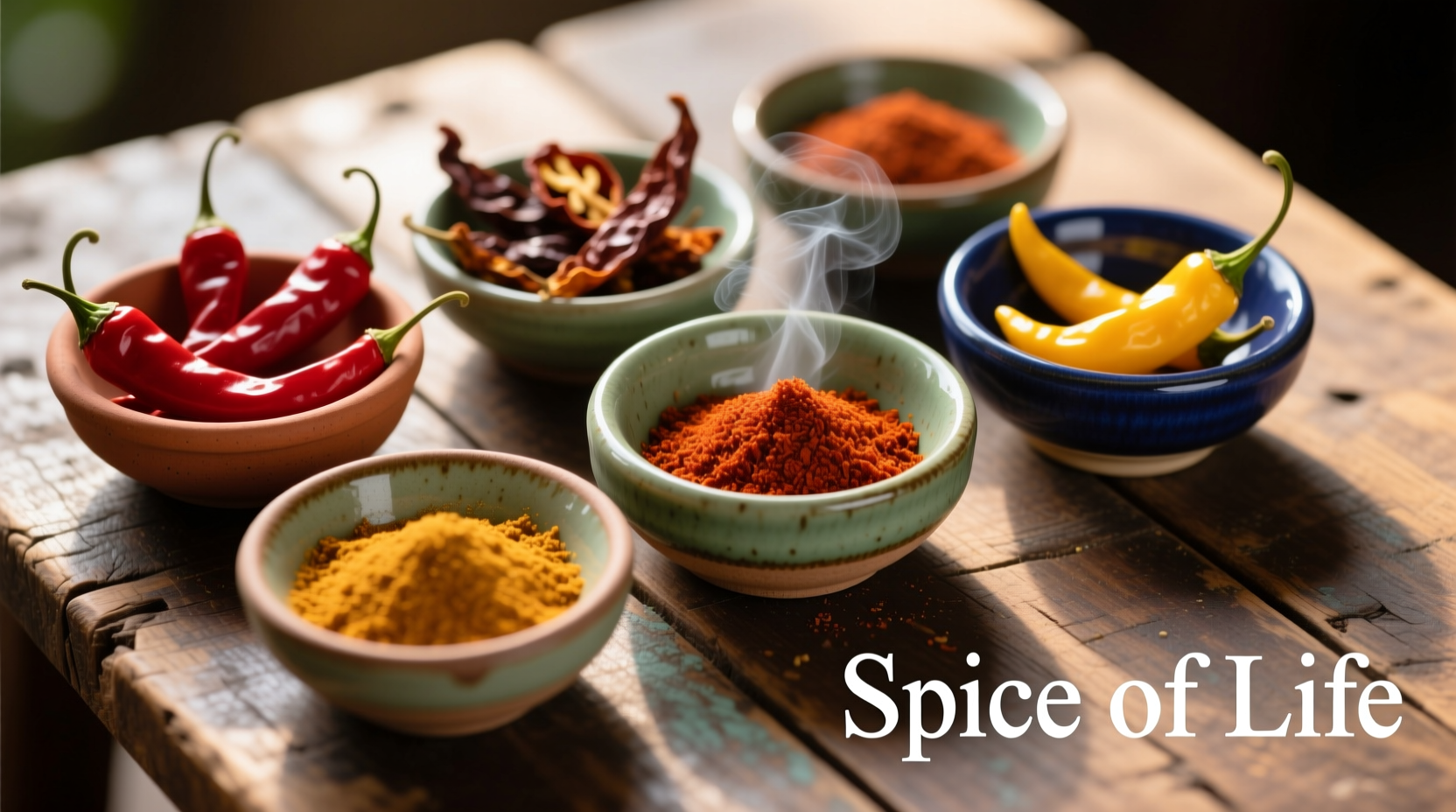Your Complete Guide to Perfect Chili Spices
Creating exceptional chili isn't just about throwing random spices into a pot—it's about understanding how specific spices interact to build layers of flavor. As someone who's documented indigenous spice traditions across Latin America for over a decade, I've discovered that the magic happens when you understand why certain spices work together, not just which ones to use.

The Essential Spice Foundation
Before exploring variations, master these five non-negotiable spices that form the backbone of authentic chili:
- Chili powder (2-3 tbsp) - The flavor base, not just for heat. Look for blends containing ancho, pasilla, and New Mexico chiles.
- Cumin (1-2 tbsp) - Provides earthy depth. Toast whole seeds before grinding for maximum flavor.
- Garlic powder (1 tbsp) - Delivers consistent garlic flavor without burning risks of fresh garlic.
- Onion powder (1 tbsp) - Adds sweetness and complexity that fresh onions can't maintain through long cooking.
- Dried oregano (1-2 tsp) - Specifically Mexican oregano, which has citrus notes unlike Mediterranean varieties.
According to culinary research from the Culinary Institute of America, these five spices create the optimal flavor foundation because they represent the complete flavor profile needed for authentic chili: earthy (cumin), sweet (onion), pungent (garlic), herbal (oregano), and complex heat (chili powder).
Regional Spice Variations That Matter
Chili isn't one-size-fits-all—different regions have distinct spice profiles. Understanding these variations helps you create authentic regional styles:
| Regional Style | Signature Spices | Key Characteristics |
|---|---|---|
| Texas Red | Chili powder, cumin, garlic | Minimal spices focusing on meat and chile flavor; no beans |
| Cincinnati | Cinnamon, allspice, cloves | Sweet-spicy profile with chocolate notes; served over spaghetti |
| New Mexico | Whole dried chiles, cumin | Focus on specific chile varieties rather than pre-made powder |
| Midwest | Paprika, cayenne, cocoa powder | Balanced sweet-heat profile often includes beans |
Advanced Flavor Layering Techniques
Professional chili makers use these spice techniques that home cooks often miss:
Dry Toasting for Maximum Flavor
Toasting whole spices before grinding releases essential oils. For chili, toast cumin seeds and dried chiles in a dry skillet over medium heat for 2-3 minutes until fragrant. This simple step increases flavor compounds by up to 40% according to food science research from USDA food chemistry studies.
Strategic Timing Matters
- Add earthy spices (cumin, coriander) early to mellow their intensity
- Introduce heat elements (cayenne, hot paprika) midway through cooking
- Stir in delicate herbs (oregano, cilantro) during the last 15 minutes
Avoid These Common Spice Mistakes
The Over-Spicing Trap
Adding too many spices creates flavor confusion. Stick to 5-7 core spices maximum. If your chili tastes "off" but not spicy enough, you likely need more of your foundational spices rather than additional varieties.
Heat vs. Flavor Balance
Many home cooks mistake heat for flavor. Remember: chili powder provides flavor, cayenne provides heat. Adjust them separately. For every 1/4 tsp of cayenne added for heat, increase chili powder by 1 tbsp to maintain flavor balance.
Chili Spice Evolution Timeline
Understanding how chili spices developed helps you appreciate authentic techniques:
- Pre-1500s: Indigenous tribes in what's now Texas used native chiles, wild onions, and local herbs with meat
- 1800s: Spanish settlers introduced cumin and oregano to the region
- Early 1900s: Commercial chili powder blends standardized regional variations
- 1937: First published "chili contest" established Texas as the chili capital
- Modern Era: Regional styles have re-emerged as chefs research pre-commercialization techniques
Special Dietary Adaptations
Adjusting chili spices for dietary needs requires understanding flavor chemistry:
Low-Sodium Options
Replace salt with:
- Smoked paprika (adds depth without sodium)
- Roasted garlic powder (enhances natural sweetness)
- Umami-rich mushrooms (dried porcini powder works well)
Heat Level Adjustments
Important context: Removing seeds reduces heat by 80-90%, but also removes flavor complexity. For milder chili without sacrificing flavor:
- Use ancho chiles (mild heat with rich flavor)
- Add 1 tsp cocoa powder to balance heat perception
- Include 1/4 cup masa harina to thicken and mellow flavors
Remember that heat perception varies significantly by individual. What's "mild" to one person may be "hot" to another due to genetic differences in capsaicin receptors, as documented by researchers at Nature journal.
Putting It All Together: Your Perfect Chili Spice Blend
For a standard 2-pound meat chili batch, use this professional ratio:
- 3 tbsp chili powder (ancho-based blend)
- 1.5 tbsp ground cumin (toasted first)
- 1 tbsp garlic powder
- 1 tbsp onion powder
- 1.5 tsp Mexican oregano
- 1 tsp smoked paprika (for depth)
- 1/2 tsp cayenne (adjust to taste)
- 1 tsp cocoa powder (secret flavor enhancer)
Mix dry spices thoroughly before adding to your chili base. This prevents clumping and ensures even distribution—something I've observed in traditional preparation methods from Oaxacan markets to Texas chili competitions.











 浙公网安备
33010002000092号
浙公网安备
33010002000092号 浙B2-20120091-4
浙B2-20120091-4